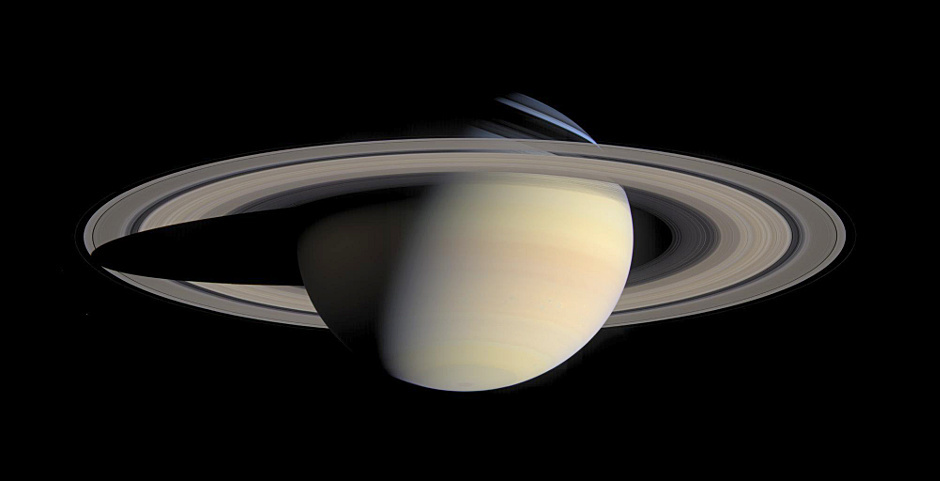The rings around Saturn are probably the most obvious planetary rings in our Solar System. However, a further three planets (Jupiter, Uranus and Neptune) and even some asteroids are also known to have rings orbiting around them as well.
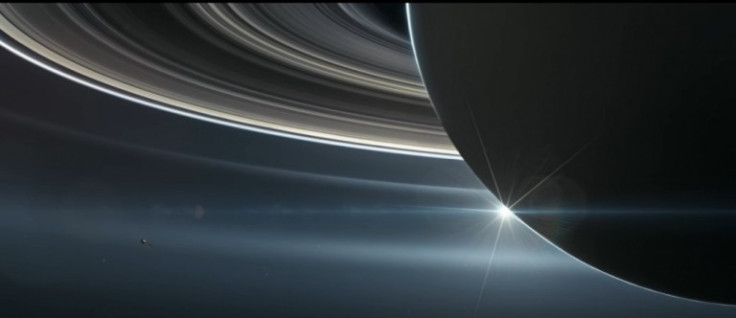
Figure 1 | Image taken by the Cassini spacecraft of Saturn and its rings backlit by the Sun (image credit: NASA/JPL).
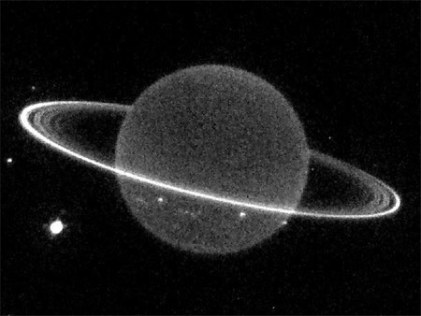
Figure 2 | An image of Uranus and its narrow rings taken by the 10 meter Keck telescope.
If we take Saturn’s rings as an example, since they are the most studied, what are some key features of planetary rings?
Orbital velocities
When we look at planetary rings from a distance they appear to be motionless and still. This could not be further from the truth with particles in the rings taking between 5 - 15 hours to go round the planet once. Given that the rings the radius of rings is from approximately 70,000km - 140,000km it requires a significant velocity to cover this distance in under a day. The gravitational force from Saturn constantly accelerates particles in the ring towards it. Thus, particles must be travelling at a right angle to this acceleration fast enough they are are constantly falling towards the planet on a curved path, known as an orbit. This velocity (v) depends on the mass (M) of the planet and the distance of the ring particle to the planet (r), given below.
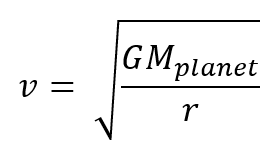
where G is the gravitational constant.
What we find is that the ring closest to the planet is orbiting much faster than parts of the ring furthest away (see Fig 3), with velocities around 20 km/s. These high velocities, that are about 10 times faster than a bullet, are one of the reasons why it isn’t a good idea to get spacecraft to close to the rings. You should also notice that this would cause a ring to orbit at different velocities and not orbit the planet as a single solid object. It can then be treated more like a fluid comprised of lots of small individual objects on their own orbit.
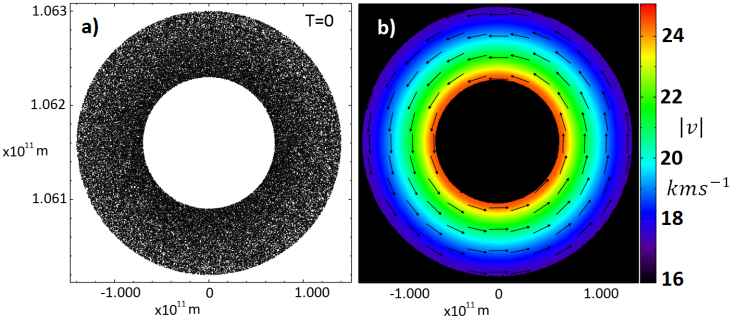
Figure 3 |a) Snapshot from a computer simulation of ring of 100,000 particles the same size as Saturn’s around a planet the same size as Saturn. b) The orbital velocity is shown as a rendered plot which ranges from 17 - 24 km/s, with the orbital direction shown by the arrows (Phil. J. Sutton).

Figure 4 | Image of Saturn and its rather circular rings taken by the Cassini spacecraft. The main rings are label with the D and F ring being too faint to see in this image (image credit: NASA/JPL).
Planetary rings, like Saturn’s, are typically very circular and do not appear to be elliptical. What is causing this? Remember that particles in the rings are travelling at high velocities? Well if a particle had an elliptical orbit it would cross the path of other fast moving particles. The collisions that these particles would undoubtedly have cause all particles to want to orbit in the same direction.
Composition
Saturn’s rings are predominantly made of water ice, but also contain small amounts of rock and dust. The rings are also made up of lots of individual objects that range from 0.001 - 20 meters in size. The size of the particles is different depending on what part of the ring you look at. For example, the brightest rings (A & B rings) have the largest particles of up to 20 meters while the faintest rings have the smallest particles (D & F rings). The small amount of dust and rock likely comes from asteroids and comets crashing into the rings (Fig 5). The Cassini spacecraft captured fast moving objects colliding with the rings creating large elongated deris clouds.
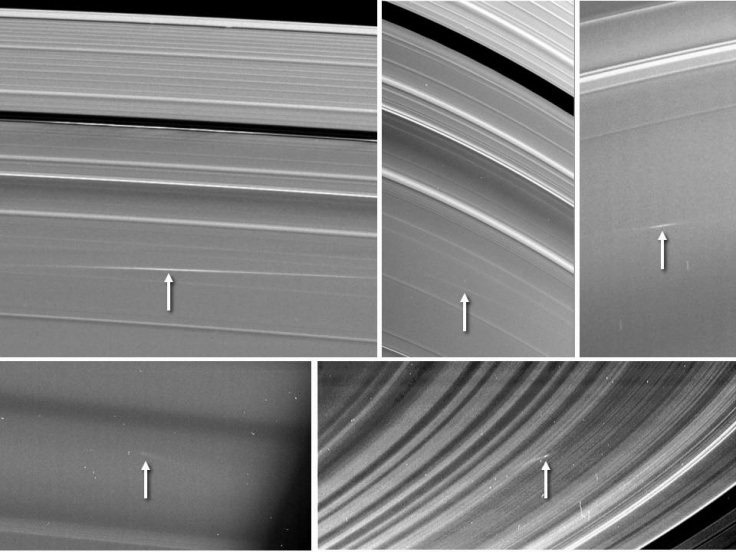
Figure 5 | Images taken by the Cassini spacecraft show meteoroids impacting the rings at high velocity creating elongated debris clouds (image credit: NASA/JPL).
Thickness
We already know that the rings are large objects, with Saturn’s extending out to a distance of 140,000km, but how thick are they? Surprisingly, they are very thin at only a few meters for most of the ring, which is only one particle thick.

Figure 6 | The rings viewed edge on with some of Saturn’s moons and Saturn show just how thin they actually are (image credit: NASA/JPL).
The reason why the rings are so thin compared with how wide they are is the same process that keeps them very circular, collisions. Particles that aren’t orbiting in the same direction, in this case their orbits are inclined, will have to pass through the ring twice every orbit. As they do this they will certainly collide with other particles. These collisions stop the particle trying to move in a direction that is inclined to the rest of the ring. In time all particles relax to form a very flat ring to minimise collisions between other particles.
Formation and Lifetimes
Generally planetary rings are thought to have short life times, astronomically speaking, of only a few million years compared to the age of the Solar System which is 4.5 billion years old. Although, this assumes there is no mechanism that might recycle the rings. The rings rapidly form into moons and dissipate away, which is one of the puzzles of why Saturn’s rings are still there. One explanation is that a large moon came too close to Saturn and its strong gravitational tides pulled it apart, forming a large ring. Over time moons would have formed at the edge of the rings and is thought to explain many of the moons we see now around Saturn. A recent discovery showed that there might have been a new moon forming at the edge of the rings (Fig 7), suggesting active moon formation is still present in Saturn’s rings.

Figure 7 | An object named “Peggy” was discovered by the Cassini spacecraft at the edge of the ring.
